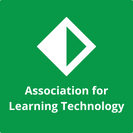
The CMALT Accreditation Framework provides pathways to peer-assessed accreditation for Learning Technology professionals in the UK and internationally. Recently, the CMALT and Blended and Online Learning Design mapping has been launched.
A new mapping has been developed for CMALT with Blended and Online Learning Design through Future Learn. This three-week teaching course aims to support teachers’ own innovations in teaching and learning online, whether you teach in a school, college or university.
Chief Executive of ALT, Dr Maren Deepwell, highlights the strategic importance of this collaboration: "Free, expert-led courses such as Blended and Online Learning Design are crucial to teachers and learners succeeding in these challenging times. As the leading professional body for Learning Technology, ALT will help promote the course across sectors and through our accreditation framework, CMALT, we provide pathways for further professional recognition and development."
The Blended and Online Learning Design course description
Develop the skills you need to teach blended and online learning
Online learning is the future of teaching. This three-week teaching course aims to support teachers’ own innovations in teaching and learning online, whether you teach in a school, college or university. See what’s possible with digital technologies and online learning methods.
You’ll understand the nature of learning design in the context of both blended and wholly online learning, and will explore the Conversational Framework concept; the notion that the teaching-learning process is an interactive exchange of concepts and practice, using the ideas of social construction and collaborative learning.
You’ll explore a range of digital tools and resources, including the Learning Designer tool, a free online tool to help teachers and lecturers design teaching and learning activities and share their learning designs with one another across all subjects.
Optimise both blended and online learning methods for your students
Through using this tool, you’ll learn how to optimise synchronous and asynchronous learning, and will explore how to implement videos, screencasts, forums, shared learning designs, polls, quizzes and to bring a selection of digital tools into your teaching techniques.
You’ll assess a wide range of learning designs and formative assessment methods for both blended and online learning in order to achieve specific types of learning outcomes.
Learn from teaching experts at UCL Institute of Education (IOE) and the community
Throughout the course, you’ll be learning from teaching experts at the UCL Institute of Education. It’s rated as the number one education faculty in the world university rankings, and provides expertise in teaching and educational research across all sectors, primary to higher education, and across all main subject
areas.
What topics will you cover?
- The nature of learning design in the context of blended and online learning
- The Conversational Framework as a tool for thinking about learning design and assessment
- Digital tools and resources, and how to optimise your learning management system for your students
- The Learning Designer tool and its uses for borrowing, planning, creating and sharing design ideas with other teachers, across and within subject areas
- Learning designs and types of formative assessment for blended and online learning to achieve different types of learning outcome
- Implementing online learning across your institution
- Gain further professional recognition for Blended and Online Learning Design
We have provided a mapping for course participants interested in accreditation pathways for the course through CMALT, the professional accreditation framework from the Association for Learning Technology (ALT). As a course participant, gaining CMALT provides a way to gain professional recognition and accreditation for participating in the course and as a next step in your professional development.
